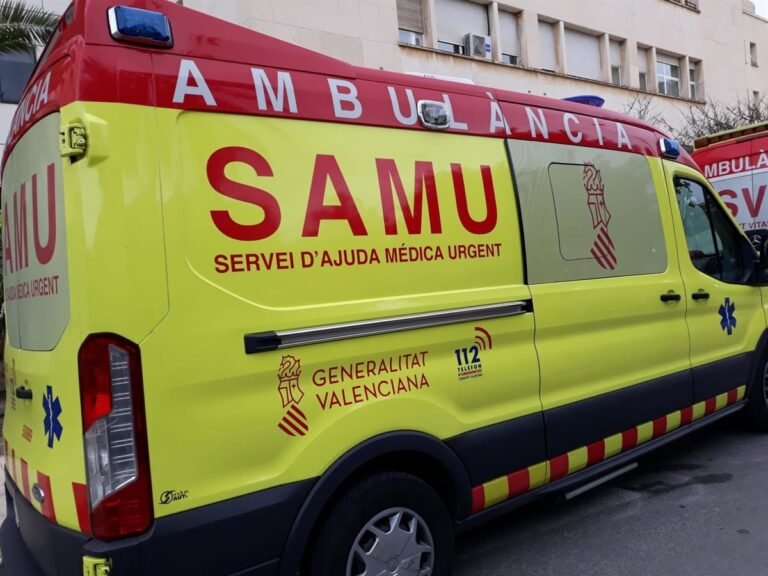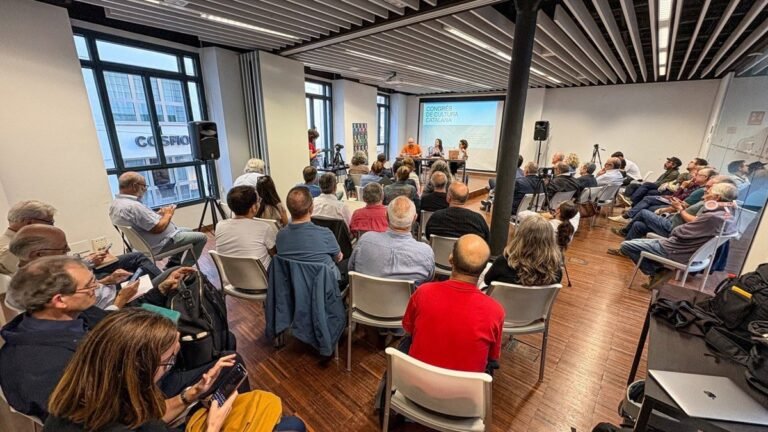
• Detail of the winning work of award 024: Pavilion 6. Psychiatric Hospital of Bémera. Pliego and, by Mª Jesús González and Patricia Gómez
- Since last December, the winning work and the finalist pieces have been exhibited in a collective show at the city museum
- The cultural action advisor, José Luis Moreno, emphasized the quality of the proposals presented in this contest, which now exceeds 60 years of history.
- The Sensra Award is a reference for established and emerging artists who recognize innovation and social commitment, through which the Valencia Municipal Council reaffirms its support for art as a tool for reflection and change.
The City Museum hosts this following the presentation of the exhibition catalog. The winning work, the proposal entitled Pavilion 6. Psychiatric Hospital of Bétera. Pliego I.By Mª Jesús González and Patricia Gómez, which is part of the Mirror del Mundo project, started in 2017.
The cultural action advisor, José Luis Moreno, will preside over the catalog presentation, which is precisely held in the space where the highlighted works in this edition can be admired starting from December 5th at the City Museum, where they will remain open to the public until the 9th.
The winning work, Pavilion 6. Psychiatric Hospital of Bétera. Pliego I.By Mª Jesús González and Patricia Gómez, is part of an artistic research exploring the memory of disappearing places. In this case, the creation focuses on the former psychiatric hospital in Valencia, where the artists recorded fingerprints and signs on the walls of the hospital to give voice to the most vulnerable and disadvantaged, as they explained.
The Prem Sensira d’Arts Visualization 2024 exhibition features this piece, along with the other works classified as finalists in the contest: días by José Luis Cremades; Nubes y pronósticos by Rocío Garriga; Pintura de cobertura by Jorge Julve; Cobre oxidado by Silvia Lerín; Homenaje by Eva Martí; SF by Claudia Pastomás; 39 ° 59 ′ 44.558 ″ N, 0 ° 5 ′ 20.078 ″ W – August 4, 1979. Time suspended by Carlos Sebastia; Choque y dispersión by M. Silvestre; and Paisaje del cuerpo domotivo by Agustín Serisuel.
Other works classified in the competition were also included in the exhibition, such as El recuerdo de una escuela by Vicent Carda; Eshter’s Way by Alexis Hernández; Colmena by Laura Salguero; Piel, corteza by Nuria Ferriol; ESPECTRO by Josep Torrero; El nuevo ecofinista es by Concha Ros Gabarda; T-20 (terrorismo ’20) by Ana Beltán; Un árbol contemplado by Marta Blasco; Teoría y todo by María Tena; Insight 1.12 by Lucía Moya; and misterio by Jaume Cremades.
A benchmark award for established and emerging artists
The Sensra Award is a benchmark for established and emerging artists who acknowledge innovation and social commitment, through which the Valencia Municipal Council reaffirms its support for art as a tool for reflection and change. This award has its origins in 1957 when the Municipal Corporation started a series of art competitions to address issues related to the city and stimulate young artists from the Valencian School. In the same year, the first painting competition was announced, which is the origin of the Sensra Award and its success was pivotal for its continuity. Over time, this award has established itself as one of the longest-running awards in Spain in the field of fine arts.
Throughout its history, the award has undergone changes in requirements and disciplines. Initially, the Municipal Council set the theme, technique, and dimensions, but it later became a free theme. Some editions focused solely on painting, while others included sculpture, printmaking, or ceramics. In 2017, it was renamed «Visual Arts Senseera» to encompass all disciplines.
This year’s jury was composed of the vice-dean of culture at the Faculty of Fine Arts, Laura Silvestre García; Vicente Samper Embiz, technician from the Exhibition Department of the Consortium of the Museum of the Valencian Community; Reyes Martínez Fuentes, plastic arts doctor and director of Galería Espai d’An set; Cristina Mulinas Pastor, head of the IVAM Registry department; and Marta López Ricarte, director of the City Museum.



